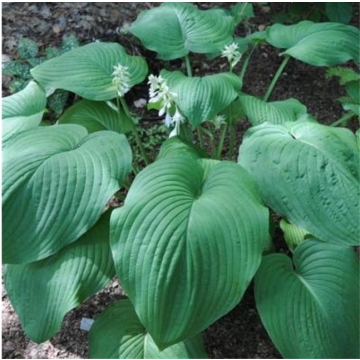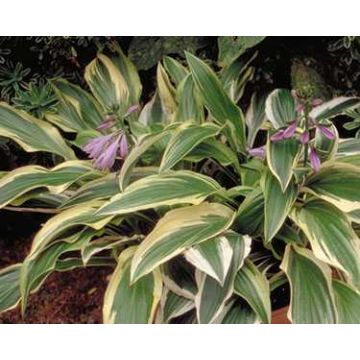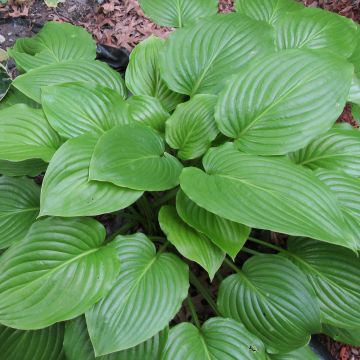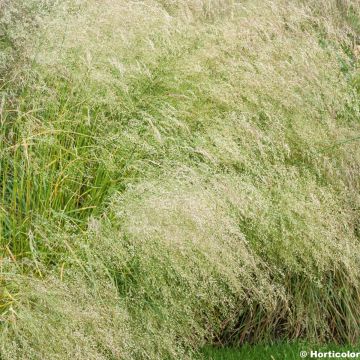Shipping country and language
Your country of residence may be:
Your country of residence is:
For a better user experience on our website, you can select:
Your shipping country:
Andorra
Austria
Belgium
Bulgaria
Canada
Chile
Croatia
Cyprus
Czechia
Denmark
Estonia
Finland
France
Germany
Greece
Hungary
Iceland
Ireland
Italy
Latvia
Lithuania
Luxembourg
Malta
Monaco
Netherlands
Poland
Portugal
Romania
Slovakia
Slovenia
Spain
Sweden
Switzerland
United Kingdom
We only deliver seed and bulb products to your country. If you add other products to your basket, they cannot be shipped.
Language:
French
German
Spanish
English
My Account
Hello
My wish lists
Plantfit
Log in / Register
Existing customer?
New customer?
Create an account to track your orders, access our customer service and, if you wish, make the most of our upcoming offers.


Hosta Sugar Daddy


Hosta Sugar Daddy


Hosta Sugar Daddy
Hosta Sugar Daddy
Hosta Sugar Daddy
Plantain Lily, Funkia
Hello! Happy New Year 2021 to everyone. My Hosta "Sugar Daddy" is doing well. It had beautiful leaves and I can't wait for the warmer days to see it again.
Françoise Marie C., 10/01/2021
Why not try an alternative variety in stock?
View all →Order in the next for dispatch today!
Dispatch by letter from €3.90.
Delivery charge from €5.90 Oversize package delivery charge from €6.90.
More information
This item is not available in your country.
Schedule delivery date,
and select date in basket
This plant carries a 12 months recovery warranty
More information
We guarantee the quality of our plants for a full growing cycle, and will replace at our expense any plant that fails to recover under normal climatic and planting conditions.
From €5.90 for pickup delivery and €6.90 for home delivery
Express home delivery from €8.90.

Does this plant fit my garden?
Set up your Plantfit profile →
Description
Hosta 'Sugar Daddy' is an exceptionally robust variety that presents a luxuriant clump of large, thick, almost round, deeply-veined, pruinose blue leaves that offer a beautiful contrast with its fine and irregular yellow margins! When exposed to non-burning sunlight, this variety gradually lightens throughout the seasons to become variegated bluish-green with creamy white. Flowering occurs in early summer with upright spikes of pendulous bell-shaped flowers that are almost white. Vigorous and highly resistant to pests and sun exposure, this Hosta develops a large colourful cushion, perfect for illuminating a shady corner or a partially shaded border. It is a deciduous perennial with no specific requirements, as long as it benefits from moist and rich soil.
Hosta 'Sugar Daddy' is a mutation of H. 'Big Daddy' introduced in 2003. The Hosta, also known as Funkia, is a hardy deciduous perennial that produces its decorative leafy clump every spring to adorn shady areas until winter arrives. It belongs to the Asparagaceae family. With a moderate growth rate, Hosta 'Sugar Daddy' forms a compact bushy clump, reaching 60cm (24in) in height and 90cm (35in) in spread. It is a long-lived plant with rough, rounded, wide cup-shaped leaves that are 25cm (10in) long and 20cm (8in) wide. Their leaves have a crumpled appearance with 13 to 14 pairs of deep veins. From the centre of its variegated foliage, tall flower stalks emerge from June to July, bearing racemes of lightly scented flowers that are over 100cm (39in) in height. The light margins of this variety are more sensitive to heat and dryness, tending to tear and turn brown under these unfavourable conditions. Therefore, the location should be chosen carefully.
Hostas thrive in moist, well-drained, and rich soils. They dislike drought and scorching exposures. A location exposed to afternoon sun or direct sun should be avoided, as it can burn the leaves of these perennials. In hotter and drier regions, thick mulching should be provided. Hostas, with their generous and decorative foliage, are perfect as ground covers, in borders, or in partially shaded to shaded flower beds, where other plants struggle to grow. They prefer sheltered and moist locations such as woodland areas. Varieties with blue and green foliage tolerate dense shade better. Sun tends to make blue leaf colours turn green. Lighter foliage thrives in partial shade, where its colour transforms and lightens with increased sunlight. In general, exposure to morning sun allows optimal development of these perennials and also makes them more floriferous. Gastropods (slugs and snails) are particularly fond of these fleshy perennials, so contemporary hybridisations aim to create hostas that are increasingly resistant to their attacks. For varieties with less tough leaves, consider using hemp mulch or mineral mulch like gravel, which will deter these pests. It is worth noting that frogs and hedgehogs are their natural predators, so encourage their presence.
Combine them in groups with other hostas, ferns, delphiniums, Solomon's seal, and other low-growing ground cover perennials such as creeping bugles, geraniums, and lamiums. All of these are highly effective as slug repellents. Brunnera macrophylla 'Mr Morse', which are silver-leaved plants familiar to woodland areas, make excellent companions. Also consider Heucheras with their wonderful range of colours or the delicate flowers of Epimediums. The golden foliage contrasts beautifully with their reds and oranges. By using these combinations, you can enhance shaded and slightly moist areas of the garden, creating a pleasant haven for the summer. Hostas also thrive in pots that should be placed in partial shade and watered regularly. Hostas complement spring bulbs wonderfully, emerging in late spring, at the perfect time to cover faded plants with their generous foliage! Plant them around a pond with persicarias, carex, and astilbes. The blue foliage harmonises perfectly with the red and purple foliage of Japanese maples, as well as the golden yellow foliage of Hakonechloas and heucheras.
Did you know: Most of the species commonly found in Western gardens have been introduced from Japan. Hostas are edible and are called urui in Japan, where they are commonly consumed.
Hosta Sugar Daddy in pictures


Flowering
Foliage
Plant habit
Botanical data
Hosta
Sugar Daddy
Liliaceae - Hostaceae
Plantain Lily, Funkia
Cultivar or hybrid
Other Hostas - Plantain Lilies
Planting and care
Hostas are planted in spring or autumn. Hostas prefer a deep, fertile, humus-rich, loose soil, preferably neutral to acidic (at least low in limestone), moist to wet throughout the year. Plant them in partial shade or dappled shade and in a sheltered location away from strong winds.
Prepare a planting hole of 20cm (8in) x 20cm (8in) x 20cm (8in). If your soil is heavy, mix equal parts of compost with crumbled soil, partially refill the hole, and place your potted plant so that the top of the root ball is covered with 3cm (1in) of soil. Adding a base fertiliser (such as bonemeal) will nourish your plant during its rooting period without risk of burning. Make sure to position the collar well above ground level. Firm the soil and water generously to eliminate air pockets. If the weather is dry, you will need to water regularly for a few weeks to facilitate your plant's establishment. Also, water regularly during dry summers.
With their common preference for moist areas, slugs and snails never stray far from hostas. Even though blue or variegated hostas often have thicker and tougher foliage, which is less appetising to slugs, these plants still need protection from gastropods. Protect your Hostas by surrounding them with eggshells, coffee grounds, wood chips, or any dry and rough natural substance that repels them. Hedgehogs are the gardener's best allies in gastropod control because, unlike hens, they do not till the soil and do not attack the young plants' green shoots. Finally, some plants have a repulsive smell for slugs, such as wormwood and garlic.
Planting period
Intended location
Care
- , onOrder confirmed
Reply from on Promesse de fleurs
Summer flowering perennials
Haven't found what you were looking for?
Hardiness is the lowest winter temperature a plant can endure without suffering serious damage or even dying. However, hardiness is affected by location (a sheltered area, such as a patio), protection (winter cover) and soil type (hardiness is improved by well-drained soil).

Photo Sharing Terms & Conditions
In order to encourage gardeners to interact and share their experiences, Promesse de fleurs offers various media enabling content to be uploaded onto its Site - in particular via the ‘Photo sharing’ module.
The User agrees to refrain from:
- Posting any content that is illegal, prejudicial, insulting, racist, inciteful to hatred, revisionist, contrary to public decency, that infringes on privacy or on the privacy rights of third parties, in particular the publicity rights of persons and goods, intellectual property rights, or the right to privacy.
- Submitting content on behalf of a third party;
- Impersonate the identity of a third party and/or publish any personal information about a third party;
In general, the User undertakes to refrain from any unethical behaviour.
All Content (in particular text, comments, files, images, photos, videos, creative works, etc.), which may be subject to property or intellectual property rights, image or other private rights, shall remain the property of the User, subject to the limited rights granted by the terms of the licence granted by Promesse de fleurs as stated below. Users are at liberty to publish or not to publish such Content on the Site, notably via the ‘Photo Sharing’ facility, and accept that this Content shall be made public and freely accessible, notably on the Internet.
Users further acknowledge, undertake to have ,and guarantee that they hold all necessary rights and permissions to publish such material on the Site, in particular with regard to the legislation in force pertaining to any privacy, property, intellectual property, image, or contractual rights, or rights of any other nature. By publishing such Content on the Site, Users acknowledge accepting full liability as publishers of the Content within the meaning of the law, and grant Promesse de fleurs, free of charge, an inclusive, worldwide licence for the said Content for the entire duration of its publication, including all reproduction, representation, up/downloading, displaying, performing, transmission, and storage rights.
Users also grant permission for their name to be linked to the Content and accept that this link may not always be made available.
By engaging in posting material, Users consent to their Content becoming automatically accessible on the Internet, in particular on other sites and/or blogs and/or web pages of the Promesse de fleurs site, including in particular social pages and the Promesse de fleurs catalogue.
Users may secure the removal of entrusted content free of charge by issuing a simple request via our contact form.
The flowering period indicated on our website applies to countries and regions located in USDA zone 8 (France, the United Kingdom, Ireland, the Netherlands, etc.)
It will vary according to where you live:
- In zones 9 to 10 (Italy, Spain, Greece, etc.), flowering will occur about 2 to 4 weeks earlier.
- In zones 6 to 7 (Germany, Poland, Slovenia, and lower mountainous regions), flowering will be delayed by 2 to 3 weeks.
- In zone 5 (Central Europe, Scandinavia), blooming will be delayed by 3 to 5 weeks.
In temperate climates, pruning of spring-flowering shrubs (forsythia, spireas, etc.) should be done just after flowering.
Pruning of summer-flowering shrubs (Indian Lilac, Perovskia, etc.) can be done in winter or spring.
In cold regions as well as with frost-sensitive plants, avoid pruning too early when severe frosts may still occur.
The planting period indicated on our website applies to countries and regions located in USDA zone 8 (France, United Kingdom, Ireland, Netherlands).
It will vary according to where you live:
- In Mediterranean zones (Marseille, Madrid, Milan, etc.), autumn and winter are the best planting periods.
- In continental zones (Strasbourg, Munich, Vienna, etc.), delay planting by 2 to 3 weeks in spring and bring it forward by 2 to 4 weeks in autumn.
- In mountainous regions (the Alps, Pyrenees, Carpathians, etc.), it is best to plant in late spring (May-June) or late summer (August-September).
The harvesting period indicated on our website applies to countries and regions in USDA zone 8 (France, England, Ireland, the Netherlands).
In colder areas (Scandinavia, Poland, Austria...) fruit and vegetable harvests are likely to be delayed by 3-4 weeks.
In warmer areas (Italy, Spain, Greece, etc.), harvesting will probably take place earlier, depending on weather conditions.
The sowing periods indicated on our website apply to countries and regions within USDA Zone 8 (France, UK, Ireland, Netherlands).
In colder areas (Scandinavia, Poland, Austria...), delay any outdoor sowing by 3-4 weeks, or sow under glass.
In warmer climes (Italy, Spain, Greece, etc.), bring outdoor sowing forward by a few weeks.



































